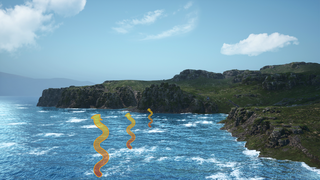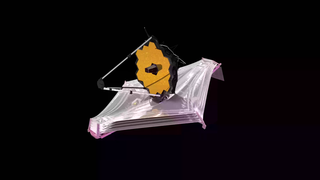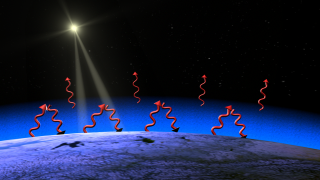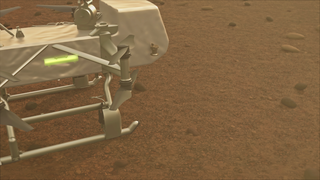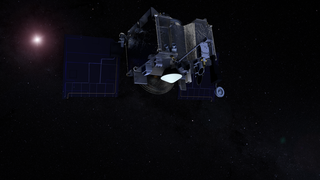Earth
ID: 20089
Experts now estimate that Tamarisk (saltcedar) has infested more than 3.3 million acres in the western United States. Tamarisk is one of our most harmful invasive species because the plant's long roots tap into underground aquifers. Its groundwater-absorbing qualities may be adding to the severity of the drought in the western U.S.
NASA and the USGS are working together to develop a National Invasive Species Forecasting System (ISFS) for the management and control of invasive species. The ISFS combines NASA Earth observations and models with field data to enhance USGS capabilities to map, monitor and predict the spread of significant invasive plant species.
Tamarisk's extensive root system can reach up to 50 feet laterally and 100 feet in depth to access the water supply. As this invasive plant draws up large amounts of water, it can lower the water table. Native plants with shallower root systems have to compete for an already-dwindling water supply. One large Tamarisk plant can absorb up to 200 gallons of water per day - that's twice the amount the average person uses in the same timeframe.
Invasive Species: Tamarisk's Use of Water
NASA and the USGS are working together to develop a National Invasive Species Forecasting System (ISFS) for the management and control of invasive species. The ISFS combines NASA Earth observations and models with field data to enhance USGS capabilities to map, monitor and predict the spread of significant invasive plant species.
Tamarisk's extensive root system can reach up to 50 feet laterally and 100 feet in depth to access the water supply. As this invasive plant draws up large amounts of water, it can lower the water table. Native plants with shallower root systems have to compete for an already-dwindling water supply. One large Tamarisk plant can absorb up to 200 gallons of water per day - that's twice the amount the average person uses in the same timeframe.
Animation Credits
Susan Twardy (HTSI): Lead Animator
Jeffrey Morisette (NASA/GSFC): Scientist
Elizabeth A. Smith (HTSI): Writer
Jeffrey Morisette (NASA/GSFC): Scientist
Elizabeth A. Smith (HTSI): Writer
Please give credit for this item to:
NASA/Goddard Space Flight Center Conceptual Image Lab
NASA/Goddard Space Flight Center Conceptual Image Lab
Short URL to share this page:
https://svs.gsfc.nasa.gov/20089
Goddard TV Tape:
G2006-002
Keywords:
GCMD >> Earth Science >> Biosphere >> Ecological Dynamics >> Invasive Species
NASA Science >> Earth
GCMD keywords can be found on the Internet with the following citation: Olsen, L.M., G. Major, K. Shein, J. Scialdone, S. Ritz, T. Stevens, M. Morahan, A. Aleman, R. Vogel, S. Leicester, H. Weir, M. Meaux, S. Grebas, C.Solomon, M. Holland, T. Northcutt, R. A. Restrepo, R. Bilodeau, 2013. NASA/Global Change Master Directory (GCMD) Earth Science Keywords. Version 8.0.0.0.0
https://svs.gsfc.nasa.gov/20089
Goddard TV Tape:
G2006-002
Keywords:
GCMD >> Earth Science >> Biosphere >> Ecological Dynamics >> Invasive Species
NASA Science >> Earth
GCMD keywords can be found on the Internet with the following citation: Olsen, L.M., G. Major, K. Shein, J. Scialdone, S. Ritz, T. Stevens, M. Morahan, A. Aleman, R. Vogel, S. Leicester, H. Weir, M. Meaux, S. Grebas, C.Solomon, M. Holland, T. Northcutt, R. A. Restrepo, R. Bilodeau, 2013. NASA/Global Change Master Directory (GCMD) Earth Science Keywords. Version 8.0.0.0.0
